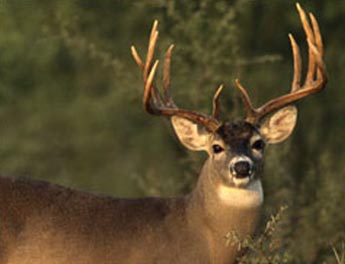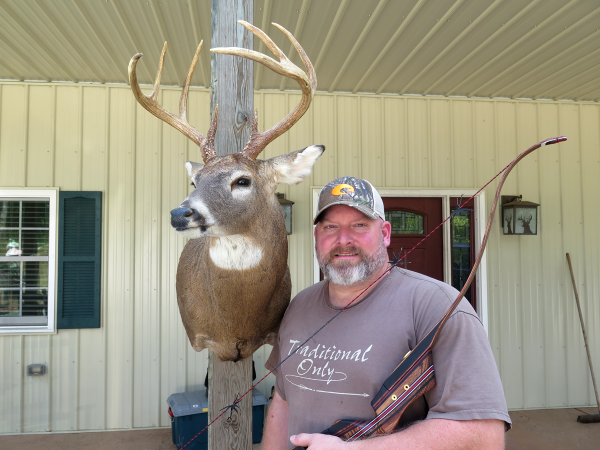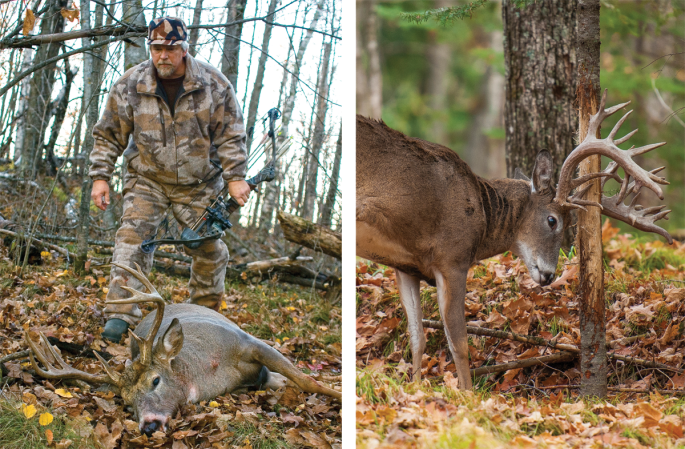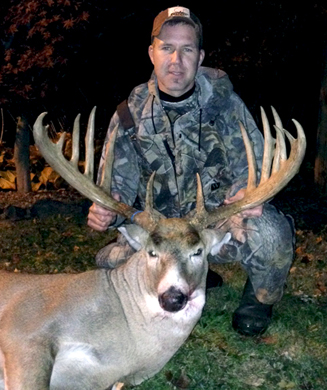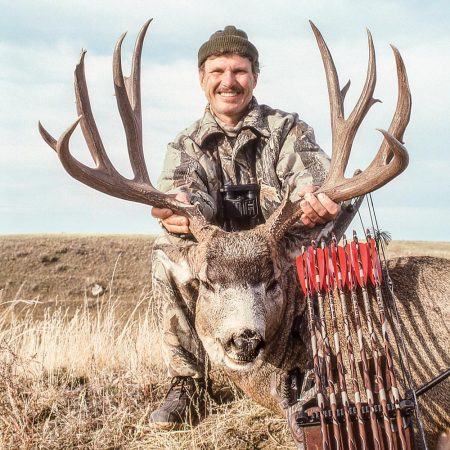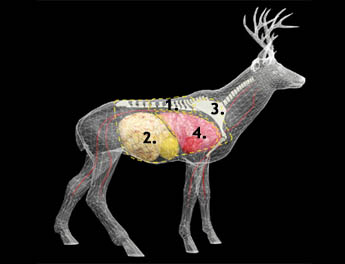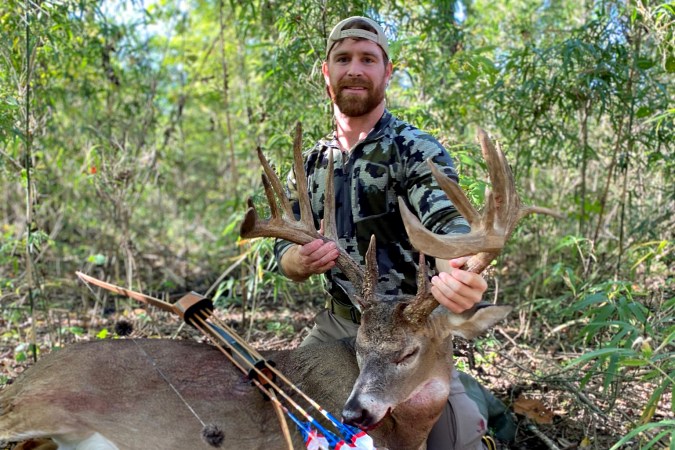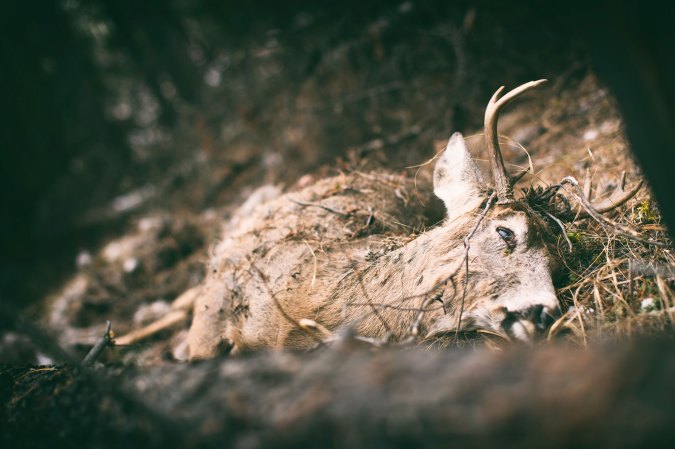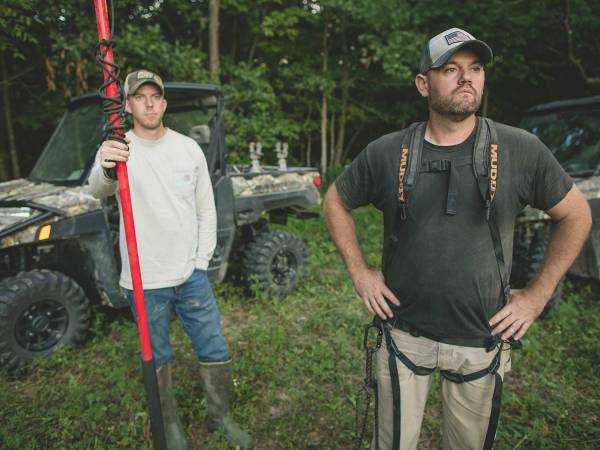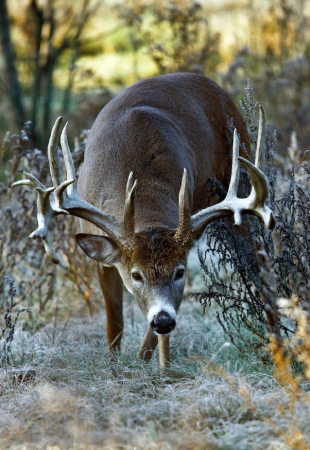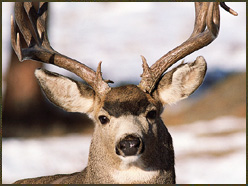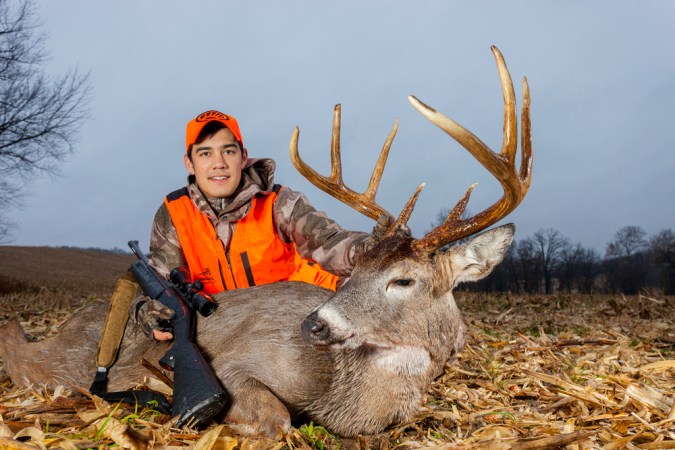For a bowhunter, a moment like the one I experienced a few seasons ago is the highest of highs. Walking slowly along the field edge, straight at my stand, was a buck with a wall of tines. He was one of the biggest whitetails I’d ever seen, which surely explains why, even though he was still more than 100 yards away, my breathing turned ragged. But this jolt of delirium was short-lived. When the buck was 60 yards out, he circled into the field and picked up the scent I had left on the tall weeds on my way in. That was all it took-he was gone.
That buck never actually caught me, just my ground scent. And there’s a big difference. Though the event registered as a serious matter to the buck, confirmed by his rapid departure, I knew this couldn’t possibly be the first time he’d run across human scent on the ground. After waiting two days for the buck to relax, I went back to the field at noon and put up a stand about 300 yards away from the original one, but in the same finger of brush. Shortly after legal shooting time the next morning, I arrowed that monster as he followed a doe right past the new stand. It was the only time I’ve ever taken a buck after spooking him.
I’m convinced that had that buck actually spotted me on stand or caught my scent still in the air, I never would have seen him in that area again. Hunting a “blown” buck is a delicate art. Sometimes it works, and sometimes you’re simply better off moving on. The ability to tell the dif-ference can prevent a sea-son of frustration.
How a buck reacts to an encounter with a hunter depends on how that encounter occurs. Suppose you shoot at a buck and miss. The deer doesn’t see or smell you; he merely reacts to the sound of the bow, or maybe to the arrow slapping a limb over his back. This buck is still very huntable-even from the same stand.
Now suppose a buck smells your ground scent like my buck did. This animal doesn’t know you’re sitting right there hoping to drag him from the woods. He’s still huntable, but it would be best to move your stand at least 100 yards in case he now associates that immediate area with human activity and avoids it, or becomes hyper-wary passing through it.
But what if a buck sees you and doesn’t smell you? I’ve had this happen a few times, and on one of those occasions I learned a vivid lesson. A medium-sized eight-pointer was crossing an open field in front of me, and just to be sure he wasn’t a shooter, I grunted him over for a closer look. I passed on shooting the incoming deer, but just as he got below my stand he saw me in the tree. His eyes practically popped out, and he exploded away.
Less than a week later, I was hunting on the other side of the field when I saw the same buck approaching the same tree I’d called him to. This time he was a completely different animal. I watched through binoculars as he made a wide circle around the area without ever taking his eyes off the spot where I’d been sitting. Had I been there at that moment, I never would have seen him. If a buck sees you, the jig is up at that stand. You’re going to have to move if you still hope to get a shot at that deer. Finally, if a buck catches your airborne scent, whether he sees you or not, he’ll react very much like the buck I just mentioned. He’ll be especially wary near your stand and will surely circle to get the wind in his favor before moving in close. You’ll think he moved on to a different area, but more likely he’s still around…and a whole lot smarter.
**Second Stands **
The odds are against getting a shot at that buck from the compromised stand. You’re better off hunting him from somewhere else. And that’s easier said than done. Finding this “somewhere else” is no easy feat. During the rut you have more room to work with because buck ranges expand. Look for another well-used travel funnel within a quarter-mile of where the buck’s been spending mostt of his time and you’re back in business. Ideally, you’ll set up in a place where there’s a good supply of does for live bait.
If you’re hunting the buck on a feeding pattern early or late in the season, however, you’ve got a lot more work in front of you. Bucks are extremely sensitive to hunting pressure when they’re on a pattern. You’ll have to find him after he relocates to a different feeding area (a difficult task), or wait until he relaxes enough to start using the same area again (which can take weeks). When you spook a buck off a feeding pattern you may as well look for a whole new buck to hunt.
